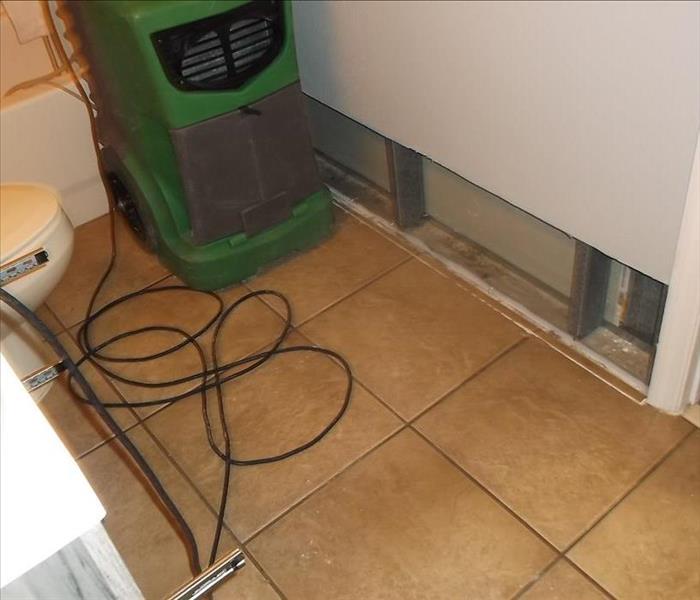Why Rely on Professional Flooding Removal in Orlando?
3/16/2021 (Permalink)
 Storm damage restoration is a job for SERVPRO. No matter the amount of damage, SERVPRO has you covered.
Storm damage restoration is a job for SERVPRO. No matter the amount of damage, SERVPRO has you covered.
SERVPRO is trained and equipped for Orlando area storm flooding recovery
With all of the natural lakes, waterways, and wetlands in central Florida, it may come as a surprise that the City of Orlando planned and invested in a human-made installation called the Orlando Wetlands Park. Learning about the vision and mission of the Park allows an intriguing window into the ways society can rectify past ecological mistakes for the benefit of the land, water, animals, and people.
What Were the Pre-Development Characteristics of the Area Now Occupied by Orlando Wetlands Park?
Before intensive settlement and development, the land upon which the Orlando Wetlands Park stood as an integral part of the St. Johns River floodplain. Specifically, the land had the features of a wet prairie:
- Treeless plains
- Sparse to dense grasses and other herbaceous plants, including:
- Wiregrass
- Maidencane
- Spikerush
- Beakrush
- Hatpins
- Marsh pinks
- Sundews
- Black-eyed Susan
- White-top sedge
- Meadow beauty
- Yellow-eyed grass
- Wax myrtle
- Pitcher plants
- Tickseed
- Panicums
- Seasonal inundated or saturated with fresh water up to 100 days per year.
- Suffered from fires every 2 to 4 years
How Did Settlement Affect the Area?
The Orlando Wetlands Park region saw significant non-Indigenous settlement starting in the late 1830s. Fort Christmas was built in 1837, and after the Civil War, the settlers commenced the draining of pre-existing wetlands for farming. Other uses included:
- Cattle grazing in the early 20th century
- Logging
- Pine tapping for turpentine
- Dairy farming beginning in the 1940s
How Did the Orlando Area Handle Increasing Amounts of Wastewater?
As the Orlando region grew precipitously after the building of tourist venues in the 1960s and later, the United States, Environmental Protection Agency (EPA) stepped in with mandates to consolidate a range of wastewater treatment facilities. In 1979 The Iron Bridge Regional Water Reclamation Facility (Iron Bridge) was the first attempt by the City of Orlando to merge the various wastewater sources. Local waterways were overwhelmed by the effluent within five years.
What Was the Answer to the Increase in Wastewater in Orlando?
Orlando purchased 1,650 acres near Fort Christmas to create an engineered wetland to manage the wastewater crisis. A year after the 1986 purchase, 1,220 acres of the land formerly used as pasture was primed to treat the reclaimed water. Up to 35 million gallons of reclaimed water pumped 17 miles from Iron Bridge passes through 4-foot diameter pipes to three wetlands, including mixed and deep marches and hardwood and cypress swamp. The wetlands clear the reclaimed water of nutrients, including nitrogen and phosphorus. From pumping to final release into the St. Johns River takes 30 to 40 days. In addition to cleaning the waste, the Orlando Wetlands Park has become a refuge for birds and other wildlife, 18 of which are considered threatened, protected or endangered.
How Does SERVPRO Restore Your Flood Damaged Home?
Finding reliable Orlando flooding removal after storm damage is just as critical for your home as the Wetlands Park wastewater solution was for the city. SERVPRO stands ready to:
- Secure external damage
- Assess and control flooding-caused safety hazards
- Consider controlled demolition to release fluids and permit effective structural drying.
- Rapidly pump and extract flood water, containing and disposing of contaminated according to local regulations.
- Clean up residues and debris
- Disinfect and deodorize affected surfaces
Have confidence in the highly-trained and well-equipped crews from SERVPRO of South Orange County when storms threaten to destroy the integrity and comfort of your home. Call us at (407) 226-2621 for an immediate evaluation of storm and flood damage.

 24/7 Emergency Service
24/7 Emergency Service